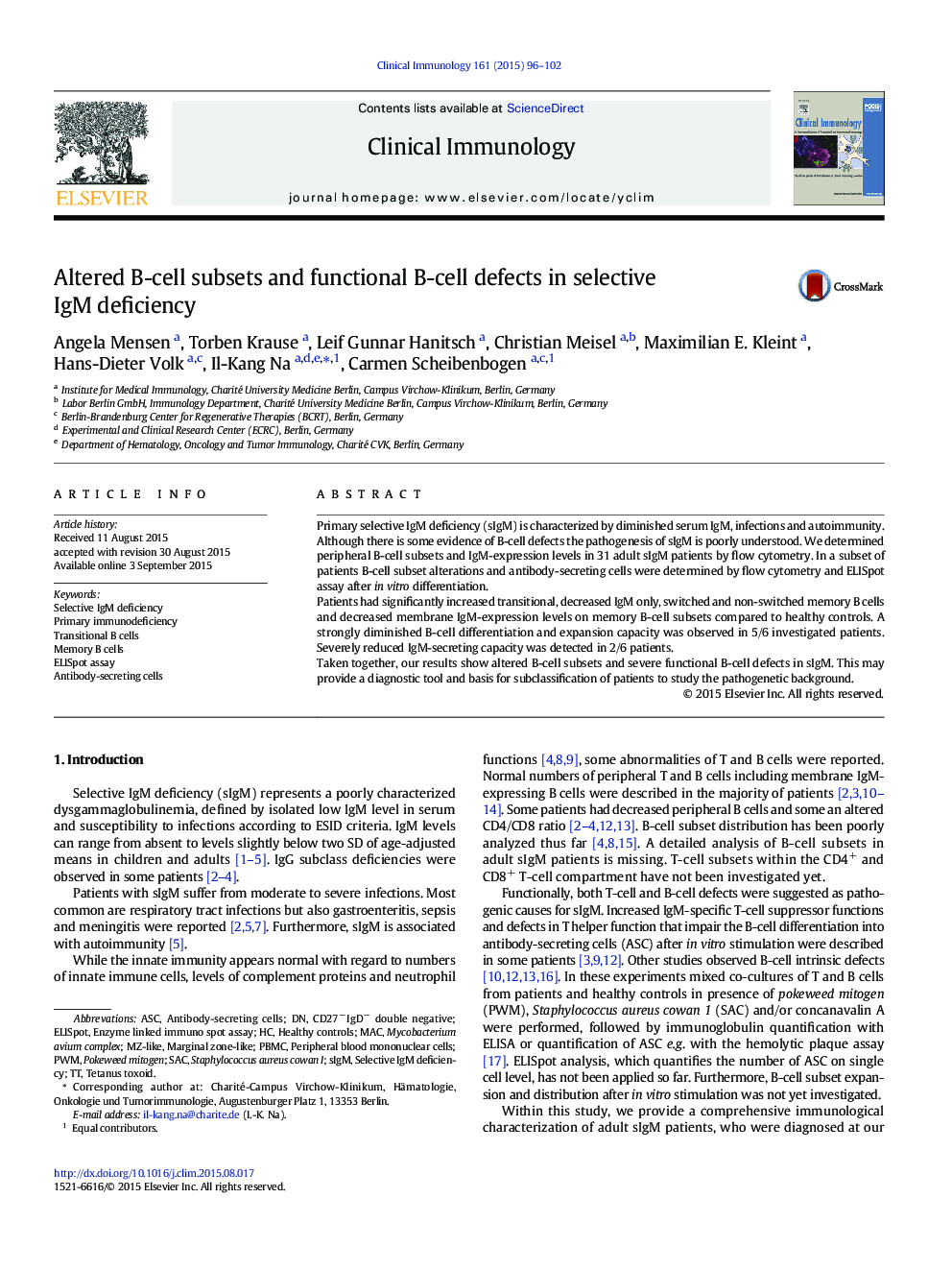| Article ID | Journal | Published Year | Pages | File Type |
|---|---|---|---|---|
| 6087091 | Clinical Immunology | 2015 | 7 Pages |
â¢Altered B-cell subsets and diminished B-cell IgM expression levels in sIgM patientsâ¢Reduced B-cell expansion and IgM secreting capacity potentially contribute to sIgM.â¢Flow cytometry and ELISpot analysis of PBMC to diagnose and subgroup sIgM patients
Primary selective IgM deficiency (sIgM) is characterized by diminished serum IgM, infections and autoimmunity. Although there is some evidence of B-cell defects the pathogenesis of sIgM is poorly understood. We determined peripheral B-cell subsets and IgM-expression levels in 31 adult sIgM patients by flow cytometry. In a subset of patients B-cell subset alterations and antibody-secreting cells were determined by flow cytometry and ELISpot assay after in vitro differentiation.Patients had significantly increased transitional, decreased IgM only, switched and non-switched memory B cells and decreased membrane IgM-expression levels on memory B-cell subsets compared to healthy controls. A strongly diminished B-cell differentiation and expansion capacity was observed in 5/6 investigated patients. Severely reduced IgM-secreting capacity was detected in 2/6 patients.Taken together, our results show altered B-cell subsets and severe functional B-cell defects in sIgM. This may provide a diagnostic tool and basis for subclassification of patients to study the pathogenetic background.
